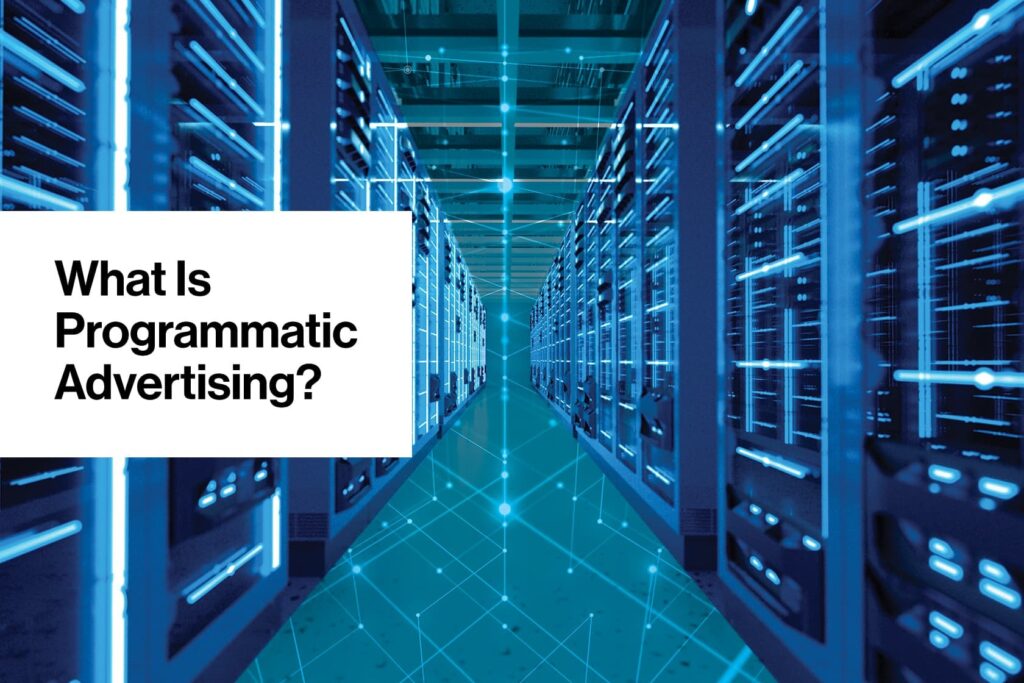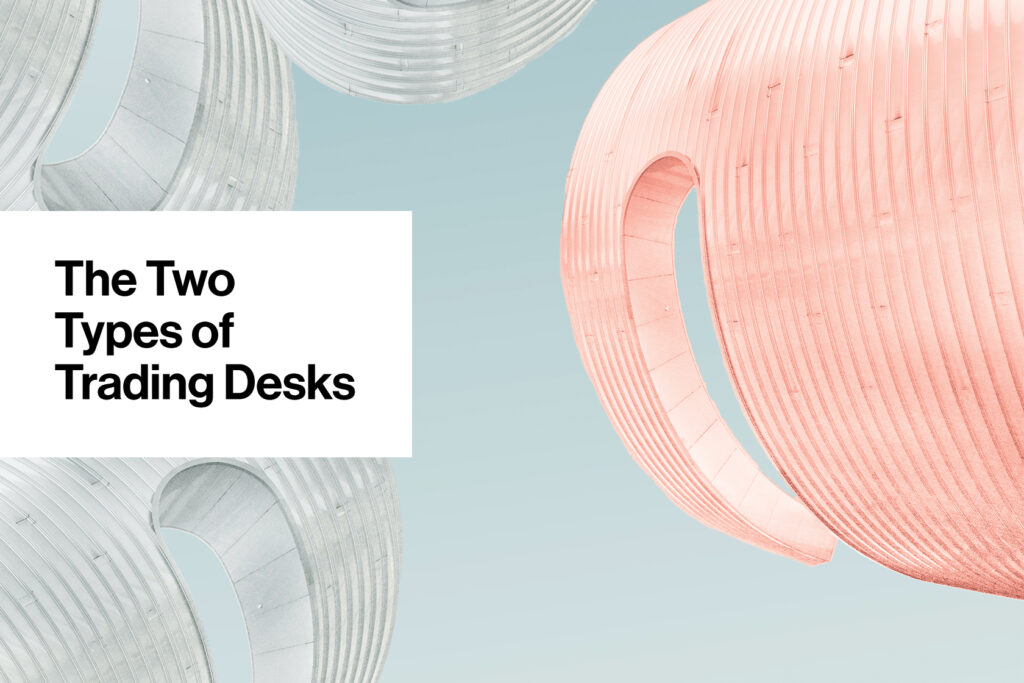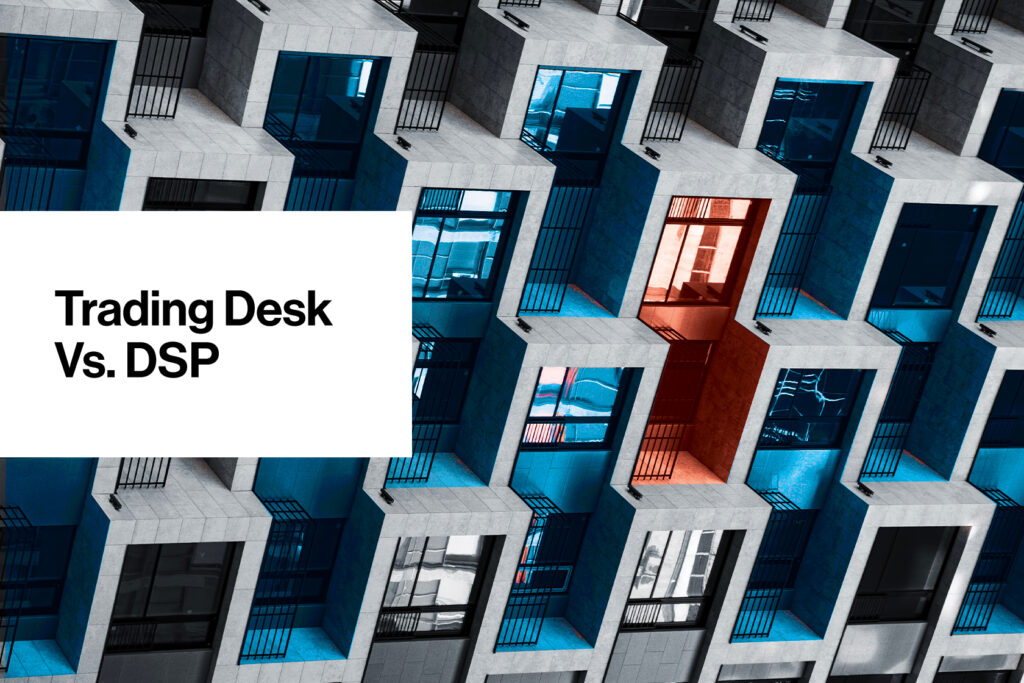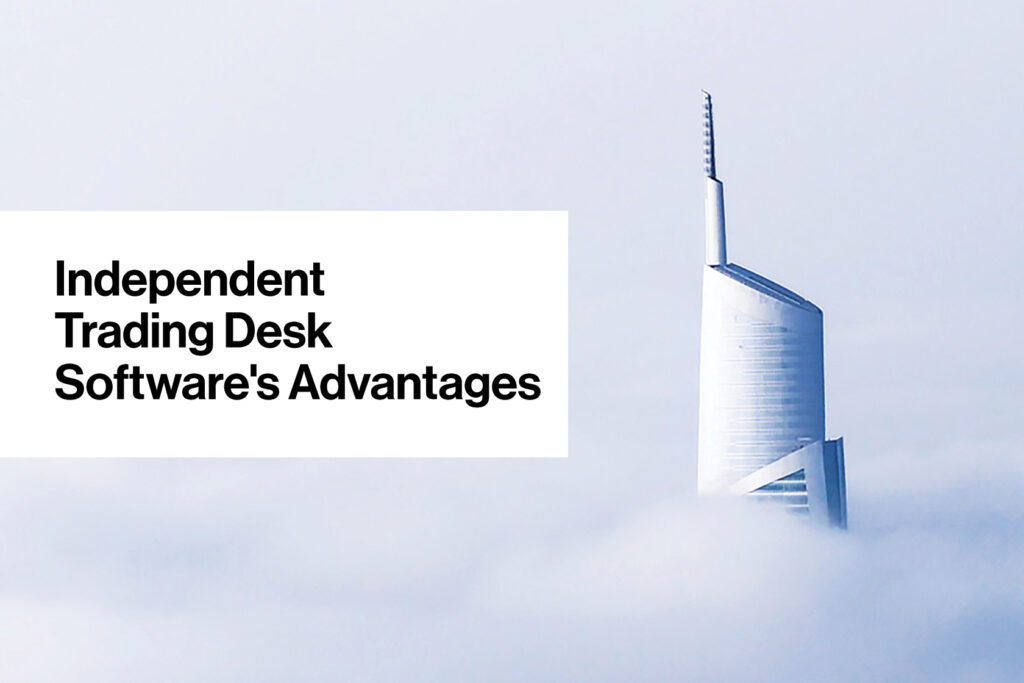For many businesses, finding and engaging with their online audience can be a major challenge. How can you reach your audience effectively when there are so many screens, devices, and apps to be targeted?
What is an independent trading desk and how does it figure into programmatic advertising? With so many screens, devices, and apps to be targeted, trading desks are used to manage programmatic media purchases in real-time across multiple channels and can either function as an agency trading desk or as an independent trading desk. While big agencies own ATDs, ITDs are owned and operated independently.
Using an independent trading desk will unify your digital advertising network, improve your advertising performance and increase your reach. You can utilize an omnichannel campaign to reach your audience through digital advertising, such as video ads, display ads, search, social and more, all while engaging with them to grow your business.
What Is Programmatic Advertising?

While programmatic ad buying has shaped and changed what online advertising looks like today, confusion remains about what programmatic advertising actually is.
Programmatic advertising refers to using software to buy digital advertising. A simple way to think about it is that you’re using machines to purchase ads. The traditional process involves human negotiations, RFPs and manually inserted orders, but programmatic advertising makes the purchasing of digital ads more efficient.
This is because the process is controlled by technology rather than humans, who can make the buying process more unreliable and expensive. By removing humans, and thus, human error, from the process where possible, programmatic advertising makes ad buying more efficient and cheaper. While people need sleep, get sick and take vacation days, machines don’t need days off. Our independent trading desk at AUDIENCEX helps our clients succeed with programmatic advertising because of our insights, pricing, and transparency.
What Is a Trading Desk?
Forrester Research defines trading desks as centralized, service-based organizations that serve as a managed service layer, typically on top of a licensed demand-side platform (DSP) and other audience-buying technologies. More simply, a trading desk is a platform that helps marketers manage their programmatic media buys in real time across all channels. In addition to display, trading desks can give you access to native ads, paid search, social, TV, and video.
The Two Types of Trading Desks

Although all trading desks handle programmatic media buys, trading desks actually come in two flavors: agency trading desks (ATDs) and independent trading desks (ITDs). The difference between these is pretty basic. ATDs are owned by large agencies, while ITDs are independently owned and operated.
Each type of trading desk has its place. However, issues with pricing transparency and control have started to drive many clients away from ATDs and toward ITDs. When choosing between the two types of trading desks, make sure to weigh the pros and cons of each option carefully.
What Is an Agency Trading Desk?
An agency trading desk is an agency that uses one or more DSPs to facilitate programmatic ad buys for their clients. In addition to giving clients access to multiple DSPs, agency trading desks offer additional services such as campaign management and data analytics. To offer these services, agencies hire account managers, software developers, data analysts, designers, and other staff members.
What distinguishes an ATD from an ITD is ownership. An agency trading desk is typically owned by a large holding company. In the past, ATDs could offer more competitive pricing because their large client base gave them greater power to negotiate with premium publishers. Today, however, online advertising companies like Google have minimized this traditional advantage.
Working with an ATD could help you improve your brand’s advertising performance, but there are downsides you should keep in mind as well. When you work with an ATD, you will not have direct access to the available media inventory. This means you may have limited control over the media purchased during your campaign. In addition, some ATDs fail to make their fees and media markups transparent, leading many clients to overpay. These downsides have led to the formation of independent trading desks.
What Is an Independent Trading Desk?
As the name suggests, an independent trading desk is a trading desk that is owned and operated independently — an ITD is not part of a larger media agency. While ATDs may share resources with the holding group’s other endeavors, ITDs focus completely on programmatic buying.
Independent trading desks offer many of the same services as agency trading desks. Depending on your needs and preferences, an ITD may provide campaign management, data analysis, or even design services to help smaller teams create their advertisements.
Because they are independently owned, ITDs offer several benefits that ATDs often do not, including:
- Transparency: Independent trading desks can be more transparent about fees and data ownership because they hold a contract directly with every client. Because ITDs earn revenue solely from programmatic and related services, they are also encouraged to offer more competitive pricing.
- Personal attention: When you work with an ITD, your brand is more likely to receive caring, personal attention. With smaller client bases and the ability to interact with each client directly, ITDs can provide a new level of customer service and campaign management. At AUDIENCEX, we offer white-glove service, handling strategy, planning, buying, optimization, and reporting.
- Control: An independent trading desk may give you more flexibility when it comes to controlling your campaign, so you can take a hands-on or hands-off approach. AUDIENCEX offers self-serve options for clients who prefer to run their own campaigns, for example.
Trading Desk vs DSP

Trading desks are not the same as DSPs. A demand-side platform, or DSP, is software that purchases advertising in an automated fashion. Trading desks, on the other hand, work with multiple DSPs, giving you access to more inventory than just one DSP. While one DSP typically reaches 70-80% of any given audience, using multiple DSPs can allow you to scale the reach of your campaigns.
Another difference between a trading desk and a DSP is service. Many companies who work directly with a DSP probably have an ad operations team on hand to manage the complex business of programmatic and RTB. The service offered by a particular DSP varies from company to company. Trading desks, however, include a service model. You are essentially paying for someone else to manage your campaigns, so you get access to an account manager to help you navigate the programmatic landscape and offer strategic advice while working together.
The pricing models for DSPs and trading desks are also different. With a DSP, you pay for a “seat” on the DSP, and there are generally very high minimums to be able to access this platform. With a trading desk, however, because you are one of many customers accessing their seat to a particular DSP, the entry price to each platform is much smaller, because you are sharing that cost with many other marketers. So trading desks are often seen as more affordable options than DSPs.
Who Uses Trading Desks?
Anyone looking to purchase programmatic ads uses a DSP. If a marketer or agency is looking for more specialized help on a really important campaign, they oftentimes work with a trading desk and the managed services that come along with that to help ensure the campaign delivers in full. There may be a lack of education or resources in-house for campaign set-up and optimization. The benefit of a trading desk over a DSP is the expertise you gain by working with people who manage data-driven campaigns all day long. For marketers who are juggling more tasks than they can count for a particular omnichannel campaign, trading desks can be a good option if they need extra help.
How Do I Know If I Need a Trading Desk?
Trading desks are great because they work with multiple DSPs to give you access to more inventory than a single DSP can offer. That’s why when you work with AUDIENCEX, you can increase your reach with our 18+ programmatic, search, and social advertising platforms, all in one place. Why would you choose one DSP when you can have as many as 18? Regardless of where your audience is located, we can help you find them.
Our platforms include:
- theTradeDesk
- MediaMath
- Display & Video 360
- Amazon Advertising
- Adobe
- Google Ads
- Dataxu
- StackAdapt
- Adswizz
- Amobee
- Tremor Video
- Snapchat
- Microsoft
- Advertising
- Simplifi
- Spotify
- Pandora
With AUDIENCEX, you aren’t limited by the selection of only one DSP. Instead, you get access to the best parts of the several DSPs we offer. Every platform offers unique strengths, which is why our DSPs can be found in a single place, with no limitations. This means you can experience a 5% to 20% increase in your performance across social, search and Amazon.
How will you know which DSPs are right for your campaign? For each demand-side platform, consider the inventory, technology, media buying methods, targeting options and more. Fortunately, we’re well-equipped at AUDIENCEX to help you evaluate the best one for your campaign.
Independent Trading Desk Software’s Advantages

Curious about the advantages of an independent trading desk? We breakdown the benefits for you below.
1. Strategic Recommendations
We offer guidance and strategies to help your brand make informed decisions across multiple channels, screens, and communication avenues. This ensures that your campaign includes the best combination of media options. Each platform is assessed based on a 250-point evaluation so that you can select the right platform or DSP for your campaign goals. Having the right DSP enables you to find the right customers and engage with them at the optimal time to grow your business. Take a look at this post to find the best DSP for you.
2. Unified Reporting & Attribution
For insights and clarity about the performance of your campaign, you can access customizable dashboards and unified reporting. Our reporting tools will quantify and monitor a wide range of performance data for you as thoroughly and immediately as possible. You’ll have easy access to all of the information you need to know to address your questions or to figure out what questions you should be asking in the first place.
3. Managed or Self-Serve
Every business is unique and comes with its own specific set of goals. Because of this, we offer both managed and self-serve methods for utilizing our technology. If your business would prefer support in your strategy, then you may want to work with our account management teams, who can serve as a daily resource. Our teams will help your business drive scalable and sustainable performance.
On the other hand, if you’d prefer more direct control of your campaign, you can opt for a self-serve model instead, through our DSP partnerships. Regardless of which method you choose, you’ll gain access to the necessary tools that will ensure you exceed your campaign goals.
4. Transparent Spending
Marketers want to know where their dollars are going. We value transparency at AUDIENCEX, and that’s why our clients know exactly how their money is spent and what the pricing structure is for each platform. Because independent trading desks aren’t owned by a large agency, clients also don’t have to worry about costly minimums or outside shareholders. This transparency in your spending is invaluable for any business.
5. Lower Minimums Than ATDs
You can say goodbye to costly minimums when you work with an independent trading desk. Since big agencies own agency trading desks, ITDs can offer lower minimums, as they are independently owned and operated. Independent trading desks allows marketers to use the strategies that work best for their businesses. This also allows clients to keep their spending more transparent and affordable than through an agency trading desk.
If you’re running ads programmatically and want to expand beyond one DSP without paying the high minimums of a DSP, a trading desk could be a good fit. The alternative to working with a trade desk is getting a seat in the specific DSP you want access to, but this process can often become costly or slow. Independent trading desks give you access to multiple DSPs that you can utilize in a way that works best with your campaign goals. The service component of a trading desk also means that a programmatic expert or ad operations specialist will manage all your campaigns and reporting post-campaign.
Ready to Elevate Your Advertising?
At AUDIENCEX, we utilize a transparent and unified approach to our omnichannel marketing campaigns, all of which are expertly designed to reach your target audience with efficiency and precision. Not only do we offer the highest quality technology, but we also provide our clients with exceptional customer service and strategic expertise. You can expect to find and convert customers and increase your revenue. For more information about how we can power your campaigns, reach out to us online.
Get the Guide: 5 Steps to Prepare for the Loss of Third-Party Cookies
In preparation for what’s to come, we’ve created a guide with 5 ways to plan your programmatic advertising strategy without the use of third-party cookies.
Fill out the form below to download the guide.

